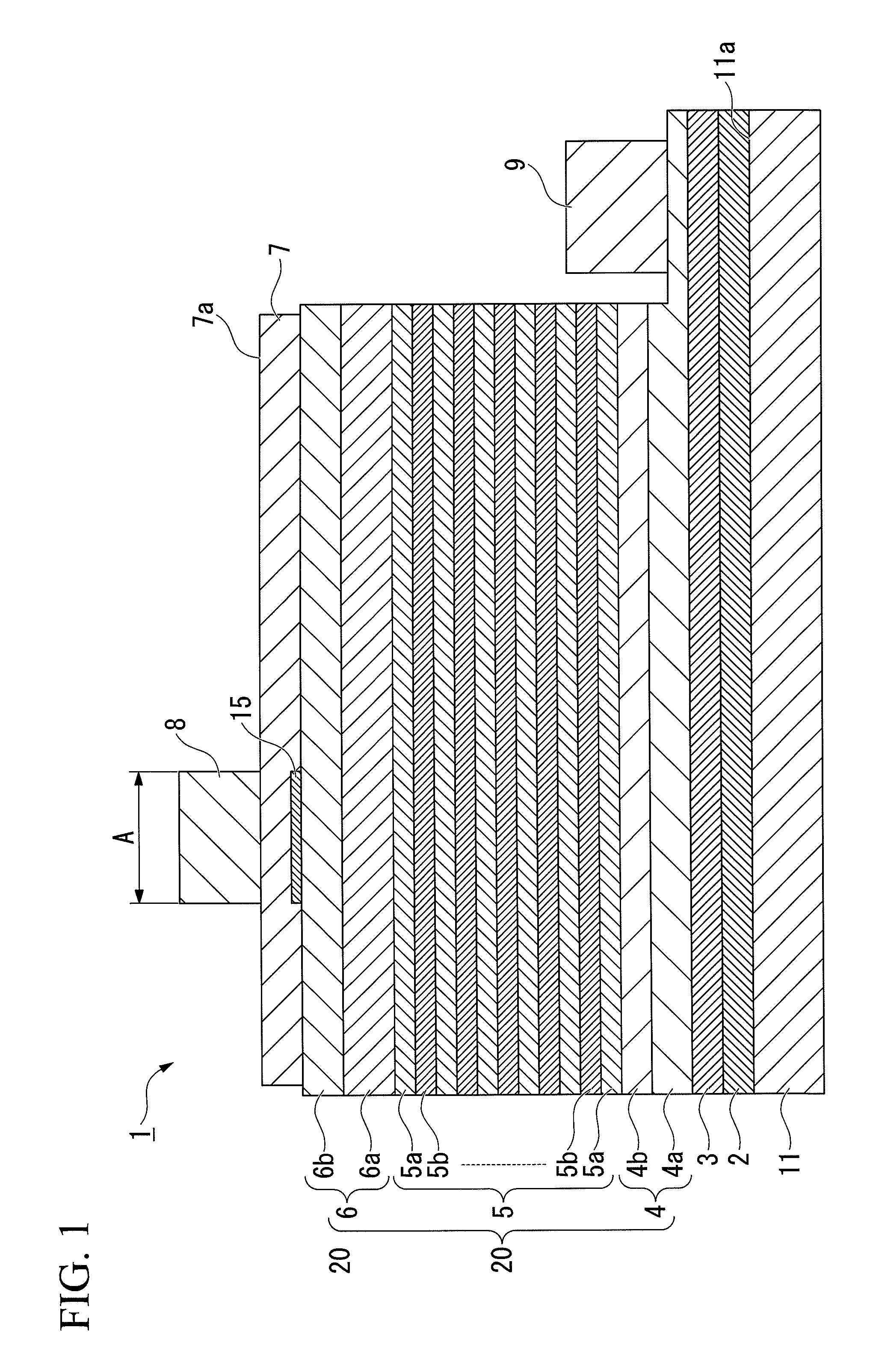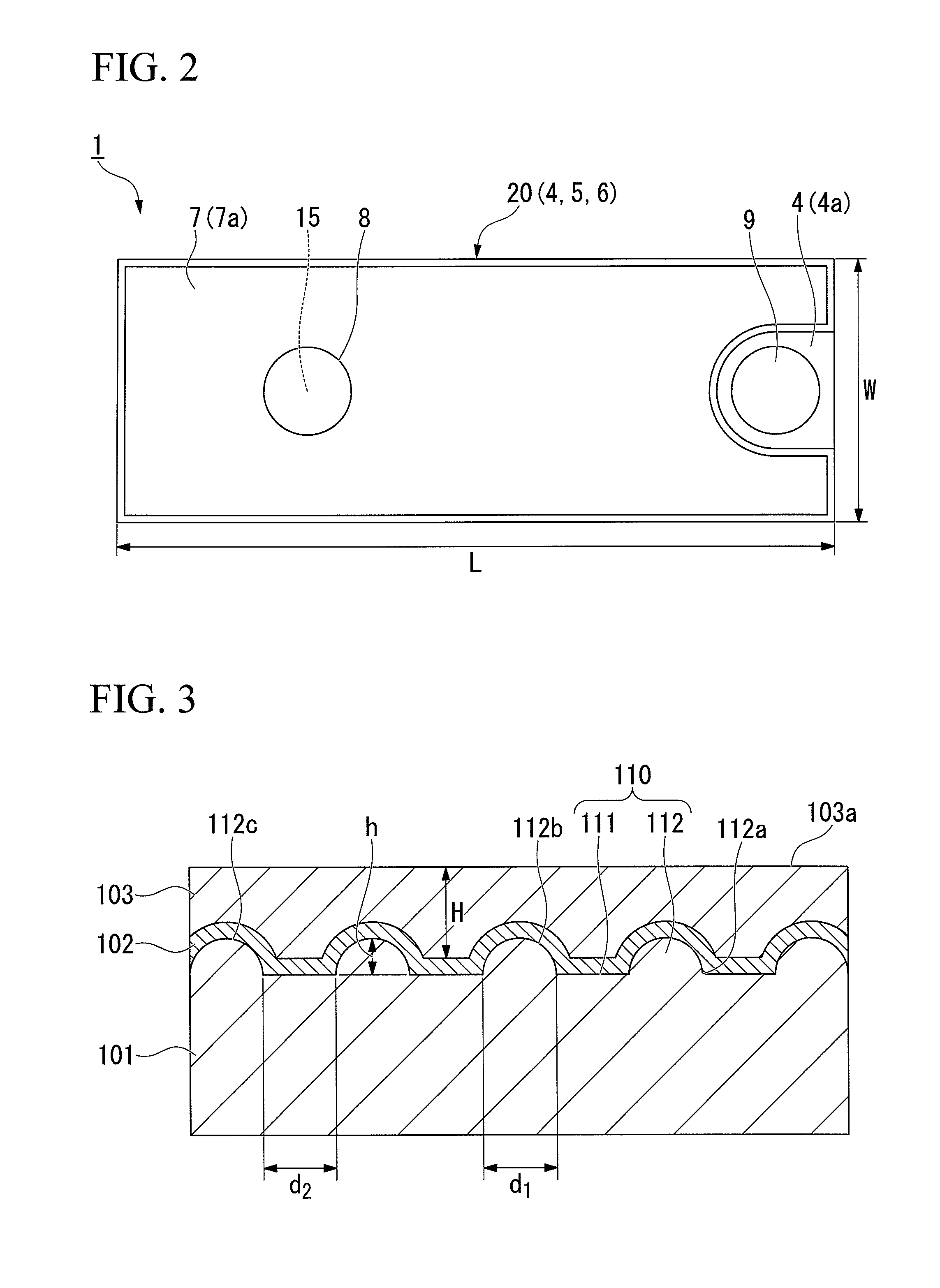Group iii nitride semiconductor light-emitting device and method of manufacturing the same, and lamp
a technology of nitride and semiconductor light, which is applied in the manufacture of semiconductor/solid-state devices, semiconductor devices, electrical devices, etc., can solve the problems of low light emission efficiency, difficult to obtain, and reduce luminance, so as to enhance light emission efficiency, enhance light extraction efficiency, and enhance light transmittance
- Summary
- Abstract
- Description
- Claims
- Application Information
AI Technical Summary
Benefits of technology
Problems solved by technology
Method used
Image
Examples
examples
[0184]Next, the group III nitride semiconductor light-emitting device, its method of manufacturing and the lamp according to the present embodiments will be described in more detail below using examples and comparative examples, but the present embodiments are not limitative. [Example 1]
[0185]In this example, samples of the light-emitting device were manufactured in the above-described processes (see FIGS. 1 to 4, FIG. 7 or the like).
[0186]Firstly, the substrate 11 having the main surface 11a formed from the (0001) C plane of a sapphire substrate was prepared. Here, in this example, a substrate in which a plurality of convex portions (not shown) was formed on the main surface 11a was used as the substrate 11 (see the convex portions 112 formed on the main surface 110 in FIGS. 3 and 4). Further, in this example, a substrate was used in which the base width d1 of the convex portion formed on the main surface 11a was 1.3 μm, the height h was 0.7 μm, and the interval d2 was 0.7 μm.
[0187...
examples 2 and 3
, Comparative Examples 1 and 2
[0206]In Examples 2 and 3 and Comparative Examples 1 and 2, under the conditions of the presence or absence of the insulation layer, the film thickness of the light-transmitting electrode, and the distance between centers of the positive electrode bonding pad and the negative electrode bonding pad from a planar view of the wafer, shown in the following Table 1, the chip of the group III nitride semiconductor light-emitting device having a rectangular shape of 240 μm×600 μm was manufactured in a similar way to Example 1, except that the relationship of the respective sheet resistances were appropriately adjusted to be the relationship shown in the following Table 1. Further, similarly, the lamp was manufactured using this chip.
[0207]Further, the light emission output Po (mW) and the drive voltage (Vf) when a forward current of 20 mA flowed between the p-side electrode (positive electrode bonding pad) and the n-side electrode (negative electrode bonding p...
examples 4 to 6
[0209]In Examples 4 to 6, under the conditions of the film thickness of the light-transmitting electrode and the relationship of the respective sheet resistances, shown in the following Table 2, the chip of the group III nitride semiconductor light-emitting device was manufactured in a similar way to Example 1, except that the relationship of the electrode separation direction size (L: chip length) and the chip width (W) in a direction perpendicular to the chip length, from a planar view of the wafer, were appropriately adjusted to be the relationship shown in the following Table 2. Further, similarly, the lamp was manufactured using this chip.
[0210]Further, the light emission output Po (mV) when a forward electric current IF of 30 mA, and as necessary, 100 mA flowed between the p-side electrode (positive electrode bonding pad) and the n-side electrode (negative electrode bonding pad) of the lamp was measured by the same method.
[0211]Specifications of the light-emitting device in Ex...
PUM
 Login to View More
Login to View More Abstract
Description
Claims
Application Information
 Login to View More
Login to View More - R&D
- Intellectual Property
- Life Sciences
- Materials
- Tech Scout
- Unparalleled Data Quality
- Higher Quality Content
- 60% Fewer Hallucinations
Browse by: Latest US Patents, China's latest patents, Technical Efficacy Thesaurus, Application Domain, Technology Topic, Popular Technical Reports.
© 2025 PatSnap. All rights reserved.Legal|Privacy policy|Modern Slavery Act Transparency Statement|Sitemap|About US| Contact US: help@patsnap.com



